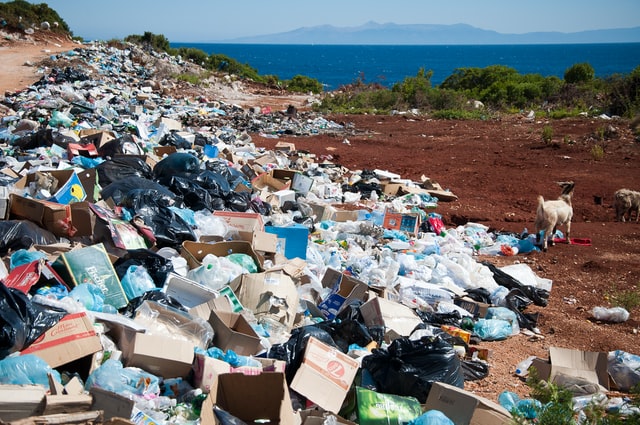
WHY ARE WE STILL POLLUTING OUR PLANET?
Article by Kirsie Horsley
Photo by Antoine GIRET on Unsplash
Humans are the biggest cause of climate change. Collectively we emit around 50 billion tonnes of Co2 yearly {an increase of 40% since 1990}. This mass amount caused a total of 401 natural disasters to occur in 2021 alone affecting over 800 million people. With the environment at its breaking point, what would it really take to save the earth?
Rapid industrialisation, deforestation, transport, and pollution include some of the most damaging causes of climate change in modern society and so it would be impossible to pinpoint a singular action that will settle and end climate change. Carbon dioxide is seen as the most important human-produced greenhouse and decreasing emissions will be a social, economic, and ecological struggle with scientists estimating it will take between $300 billion and $50 trillion to end global climate change.
China, amongst other modern industrial societies, is the biggest producer of greenhouse gases and is producing 2x the amount the USA produces {the second biggest}. In 2020 China was recorded to have around 399,000 industrial operations running https://www.statista.com/statistics/232313/number-of-industrial-enterprises-in-china/ . {see graph here}. Such factories produce cars, technology, and fashion to name a few. Fast fashion is one of this generation’s major problems to tackle. The term is defined as “inexpensive clothing produced rapidly by mass-market retailers in response to current trends” {Oxford dictionary}. The current industry produces 1.2 billion tonnes of greenhouse gasses yearly, overtaking other major impactors such as the shipping industry. The 2021 report from The World Economic Forum reported that the fashion industry was responsible for producing 5% of the world’s greenhouse gas emissions and is the world’s third largest polluter. This problem has peaked in recent years as fashion brands are able to reach customers through easy access to the internet. Consumers often lean towards fast fashion due to its availability and exceptionally low price. The fast fashion industry is valued at $8.4 billion in 2019 and this figure is expected to grow as It’s estimated the industry will be worth over $200 billion in 2030. Although this means massive profits for brands it is putting humanity at risk. But who is to blame for this?
“The treadmill of production” is a theory of society proposed by Alan Scgnaiberg which used Marxist ideology to understand the capitalist societies of today and identify the roots of capitalist dynamics within our economy. He was interested in how advancements in society are not caused by the public but rather by production. Production structures societies’ consumption and controls what humans buy into “while customers can accept or reject these products, they have no influence over the allocation of capital to productive technologies” {Gould, Pellow and Schnaiberg 2008: 20}. The production of products has a direct link to our ecosystem, and this is something as a society we cannot tackle unless supported by those who control the means of production who are in denial of their input to the current global disaster.
However, in recent years the recognition of climate change and its impacts has increased as in 2005 “climate change deniers” were greatly marginalised {Lever Tracy {2008: 448-50}} and global warming was finally being seen as a threat to society {Abbott, Rogers and Sloboda 2007} which is a step in the right direction. In 2019 the biggest climate crisis protests the world has ever seen were held globally where it’s believed that 185 countries joined in the fight against climate change. With thousands of students leaving the classroom to participate it was demonstrated how important it is to the next generation that climate change is stopped as it is them who will suffer the greatest implications, not their current elder leaders.
So, what should our solution be? Factories can run so cheaply due to the current low cost of oil or “black gold” that is used as though there is a never-ending supply which we know for a fact is not true. Urbanization is increasing and sooner or later we will no longer be able to keep up with the high demands of the modern 21st century. If leaders made oil more expensive and less accessible this to me seems the most effective, quickest, and cheapest way of saving our continents and preventing the destruction of our planet.
References:
– FashionDiscounts (2021). 28 Intriguing Fast Fashion Statistics for 2021. [online] Fashion Discounts. Available at: https://fashiondiscounts.uk/fast-fashion-statistics/.
– Statista. (n.d.). China: number of industrial enterprises. [online] Available at: https://www.statista.com/statistics/232313/number-of-industrial-enterprises-in-china/.
– Climate Council (2021). Fast fashion needs to slow down for the climate. [online] Climate Council. Available at: https://www.climatecouncil.org.au/resources/fast-fashion-climate-change/.
– Adler, S. (2020). How Much Would It Cost To End Climate Change?[online] Learn – GlobalGiving. Available at: https://www.globalgiving.org/learn/cost-to-end-climate-change/.
– Urry, J. (2009). Sociology and Climate Change. The Sociological Review, 57(2_suppl), pp.84–100.

0 Comments